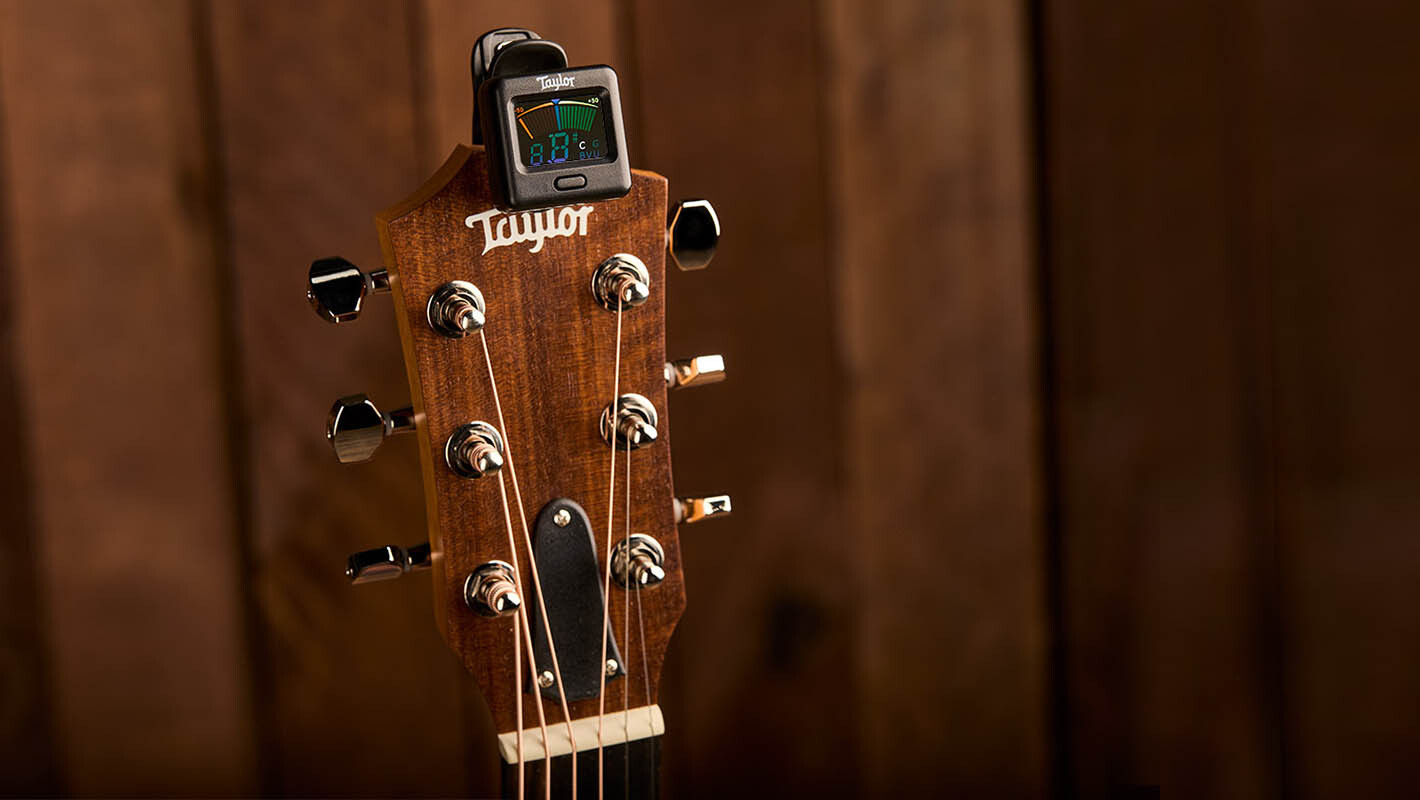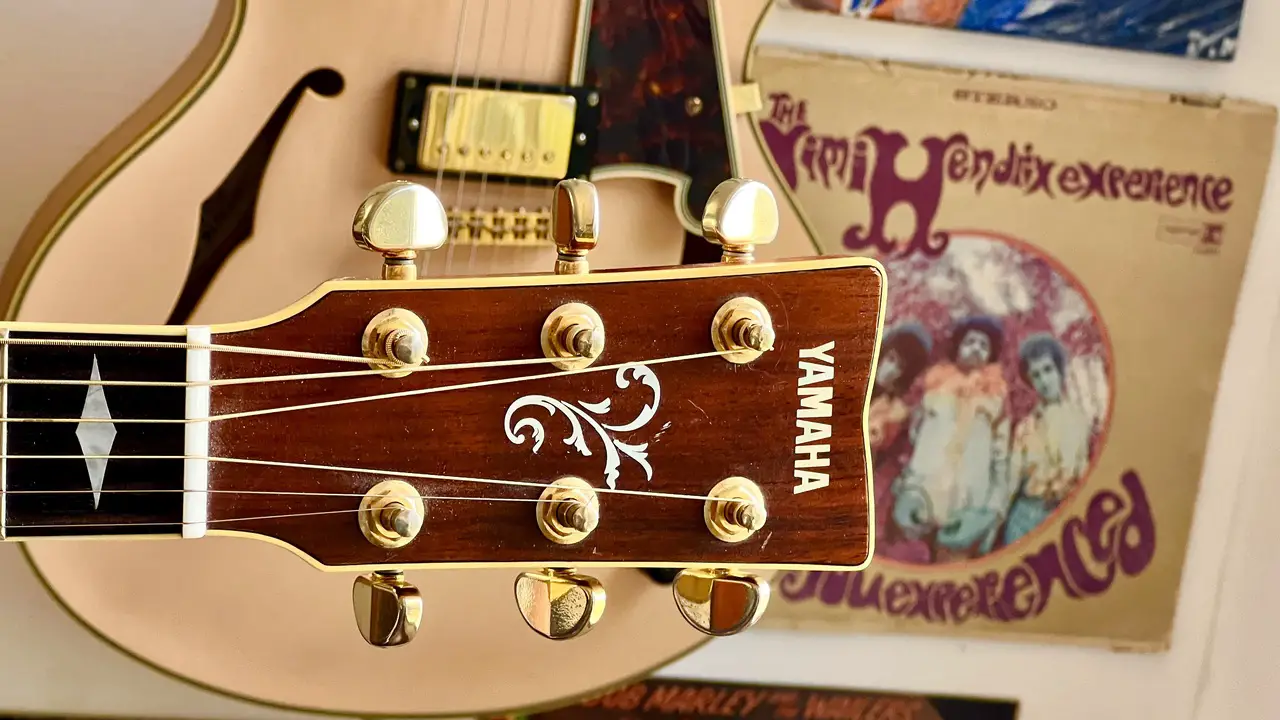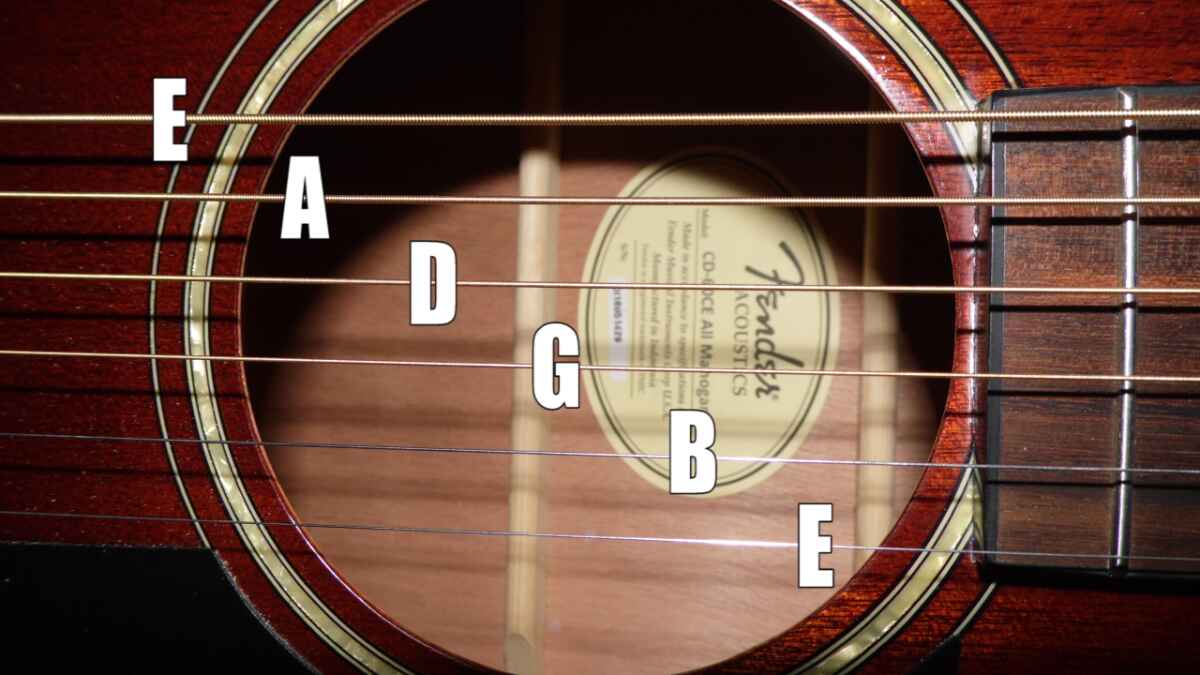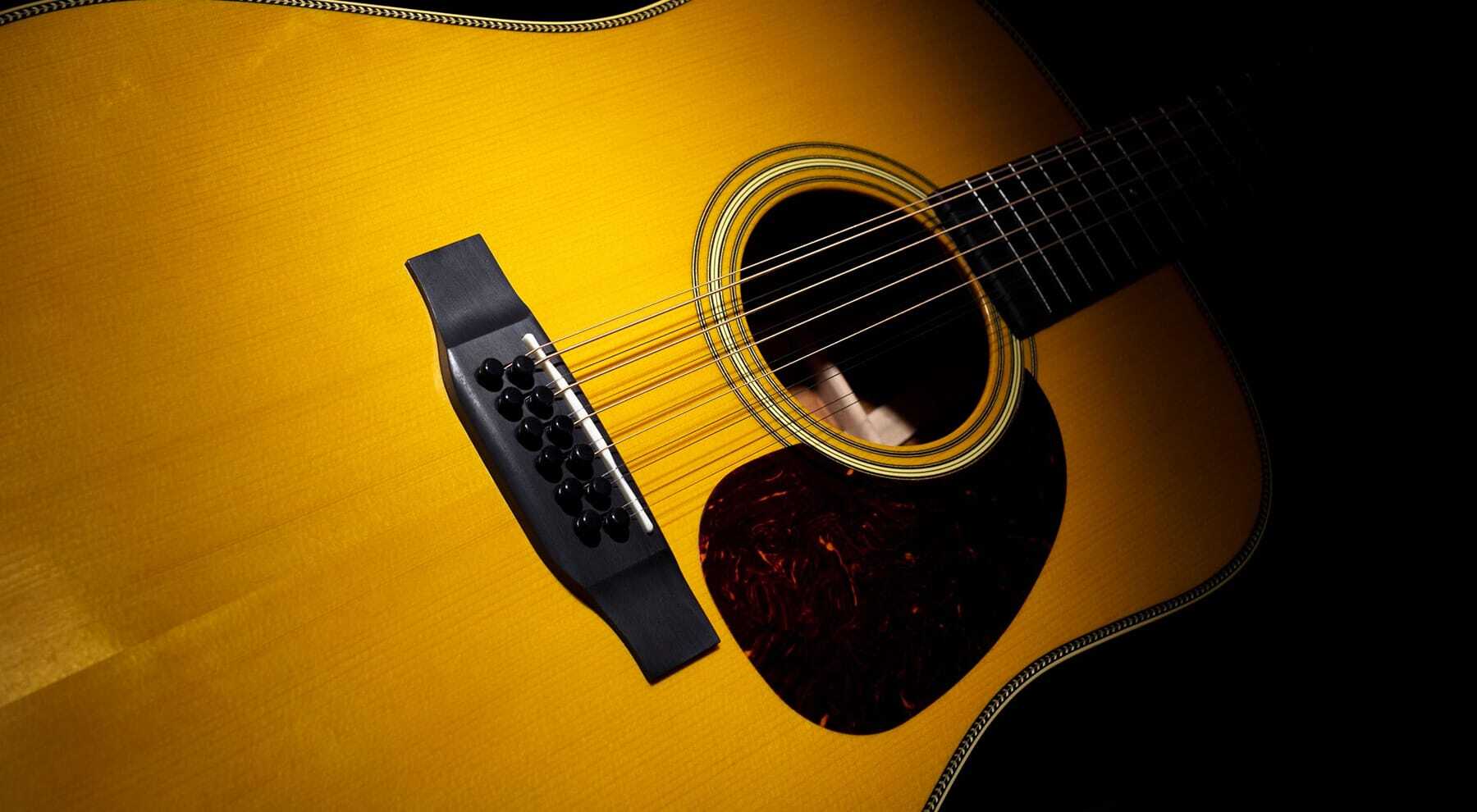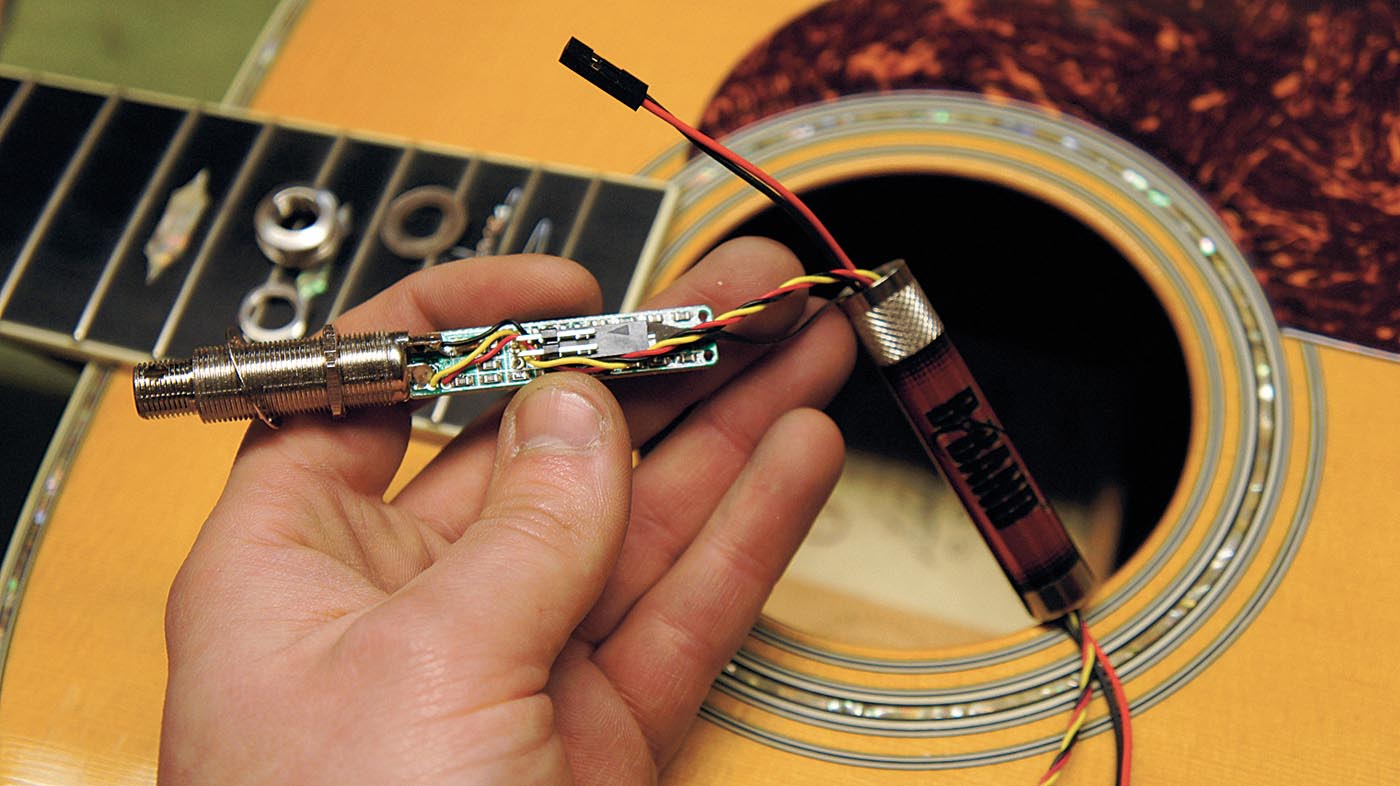Introduction
Tuning an acoustic guitar with a tuner is a fundamental skill for any guitarist, whether you're a beginner or a seasoned musician. A well-tuned guitar not only ensures that your music sounds harmonious and in key, but it also contributes to the overall enjoyment of playing. While tuning by ear is a valuable skill, using a tuner provides a precise and efficient method for achieving the perfect pitch.
In this guide, you'll learn the step-by-step process of tuning your acoustic guitar using a tuner. Whether you're preparing for a performance, a recording session, or simply practicing at home, this essential skill will elevate your playing experience. By following these straightforward instructions, you'll be able to keep your guitar in tune and ready to create beautiful music at any time.
Tuning your guitar is a vital aspect of maintaining its sound quality and ensuring that your playing is in harmony with other instruments and recordings. Whether you're a beginner or an experienced guitarist, mastering the art of tuning with a tuner will enhance your musical journey. So, gather your tuner and your acoustic guitar, and let's dive into the simple yet crucial process of achieving the perfect pitch.
What You’ll Need
Before you begin tuning your acoustic guitar with a tuner, it’s essential to gather the necessary tools. Here’s what you’ll need:
- An Acoustic Guitar: Ensure that your guitar is in good condition and that the strings are properly installed.
- A Digital Tuner: Choose a reliable digital tuner designed for acoustic guitars. There are various types of tuners available, including clip-on, pedal, and smartphone apps. Select one that best suits your preferences and budget.
- A Quiet Environment: Find a peaceful and quiet space to minimize external noise, allowing the tuner to accurately detect the pitch of your guitar strings.
Once you have these essential items ready, you’ll be well-equipped to proceed with the tuning process. Having a well-maintained guitar and a reliable tuner in a conducive environment will set the stage for achieving optimal tuning results.
Step 1: Turn on the Tuner
Before you can begin tuning your acoustic guitar, the first step is to turn on your digital tuner. Depending on the type of tuner you have, this may involve pressing a power button, activating a switch, or simply opening the tuner app on your smartphone. Once the tuner is powered on, you’re ready to proceed to the next step.
If you’re using a clip-on tuner, gently attach it to the headstock of your acoustic guitar. Ensure that it is securely fastened in a position that allows it to detect the vibrations of the guitar strings accurately. For pedal tuners, engage the tuner function using the designated footswitch. If you’re using a smartphone app, open the app and select the tuning mode for the acoustic guitar.
Turning on the tuner sets the stage for the precise detection of the pitch of each string, laying the foundation for achieving optimal tuning results. With the tuner activated and properly positioned, you’re now ready to move on to the next step in the tuning process.
Step 2: Pluck the Strings
With the tuner turned on and ready, it’s time to pluck the strings of your acoustic guitar. Start with the low E string, which is the thickest string and is closest to your chest when you’re holding the guitar in playing position. Then, proceed to the A, D, G, B, and high E strings, in that order. Plucking the strings in this sequence will allow you to tune the guitar methodically, ensuring that each string is accurately adjusted.
When plucking the strings, it’s important to produce a clear and sustained sound. This allows the tuner to detect the pitch accurately and provide you with the necessary feedback to adjust the tuning. Plucking the strings firmly and consistently will help the tuner register the pitch and display the corresponding information clearly.
As you pluck each string, observe the tuner display to see the pitch detection in real-time. The tuner will indicate whether the string is tuned too low, too high, or in tune. This visual feedback will guide you in making the necessary adjustments to achieve the correct pitch for each string. By plucking the strings systematically and paying attention to the tuner display, you’ll be well-prepared to move on to the next crucial step in the tuning process.
Step 3: Read the Tuner Display
As you pluck each string of your acoustic guitar, the tuner display will provide essential feedback to guide you in the tuning process. The display typically shows a visual representation of the pitch detection, indicating whether the string is tuned too low, too high, or in tune. Understanding and interpreting the tuner display is crucial for making precise adjustments to achieve the perfect pitch for each string.
When the tuner detects the pitch of a plucked string, it will display this information in various ways, depending on the type of tuner you’re using. Some tuners use a needle or LED lights to indicate the pitch, while others utilize a digital interface with a numerical display. Regardless of the display format, the goal is to ensure that the indicator aligns with the desired pitch for each string.
If the tuner display indicates that a string is tuned too low, you’ll need to tighten the string’s tuning peg to raise the pitch. Conversely, if the display shows that the string is tuned too high, you’ll need to loosen the string to lower the pitch. The tuner’s visual feedback serves as a guide for making these adjustments, allowing you to bring each string into perfect tune.
By closely observing the tuner display and understanding its feedback, you’ll be equipped with the information needed to proceed confidently with adjusting the tuning of each string. This essential step sets the stage for achieving precise and harmonious tuning results, ensuring that your acoustic guitar produces beautiful and resonant sounds.
Step 4: Tune the String
Once you’ve read the tuner display and identified whether a string is tuned too low or too high, it’s time to make the necessary adjustments to bring it into perfect tune. Using the feedback provided by the tuner, you’ll engage the tuning pegs of your acoustic guitar to achieve the desired pitch for each string.
If the tuner indicates that a string is tuned too low, turn the corresponding tuning peg clockwise to tighten the string and raise the pitch. Conversely, if the display shows that the string is tuned too high, turn the tuning peg counterclockwise to loosen the string and lower the pitch. It’s important to make these adjustments gradually and in small increments to avoid over-tightening or loosening the strings, which can lead to tuning instability.
As you make adjustments to the tuning pegs, continue to pluck the string intermittently and observe the tuner display. This iterative process allows you to fine-tune the string’s pitch, ensuring that it aligns precisely with the desired note. The visual feedback from the tuner display serves as a reliable guide, enabling you to make accurate adjustments and achieve optimal tuning results.
Throughout this step, it’s essential to maintain patience and attentiveness, as achieving the perfect pitch for each string requires careful adjustments and keen observation of the tuner display. By methodically tuning each string based on the feedback provided, you’ll ensure that your acoustic guitar produces rich, resonant tones that enhance your playing experience.
Step 5: Repeat for Each String
After tuning the first string, it’s essential to repeat the process for each remaining string on your acoustic guitar. Move systematically through the A, D, G, B, and high E strings, plucking each one and adjusting its tuning based on the feedback from the tuner display. This sequential approach ensures that every string is finely tuned to produce harmonious and consistent notes across the instrument.
As you proceed to tune each string, remember to pluck the string, read the tuner display, and make the necessary adjustments to achieve the desired pitch. Each string may require different degrees of tuning, and the visual feedback from the tuner will guide you in achieving precise results. By repeating this process for every string, you’ll ensure that your acoustic guitar is finely tuned and ready to deliver exceptional sound quality.
Throughout this step, it’s important to maintain focus and attention to detail, as the tuning of each string contributes to the overall tonal balance and resonance of the guitar. By systematically repeating the tuning process for each string, you’ll establish a consistent and harmonious pitch across the instrument, setting the stage for an enjoyable and musically rewarding playing experience.
Conclusion
Congratulations! You’ve successfully learned the step-by-step process of tuning your acoustic guitar using a tuner. By following these straightforward instructions, you’ve gained the essential skill of achieving precise and harmonious tuning, ensuring that your guitar produces beautiful and resonant sounds.
Mastering the art of tuning with a tuner is a valuable asset for any guitarist, whether you’re a beginner or an experienced musician. A well-tuned guitar not only enhances the quality of your music but also contributes to the overall enjoyment of playing. With your newfound expertise, you can confidently prepare for performances, recording sessions, or simply enjoy practicing at home with a finely tuned instrument.
Remember, maintaining your guitar in tune is an ongoing process, and regular tuning is essential to preserve the instrument’s sound quality. By utilizing the skills you’ve acquired, you can ensure that your acoustic guitar consistently delivers optimal tonal balance and resonance, enriching your musical journey.
So, grab your tuner and your acoustic guitar, and embark on your musical endeavors with the confidence that comes from knowing how to achieve the perfect pitch. With each note finely tuned, your guitar is ready to resonate with the melodies of your creativity and passion for music.







